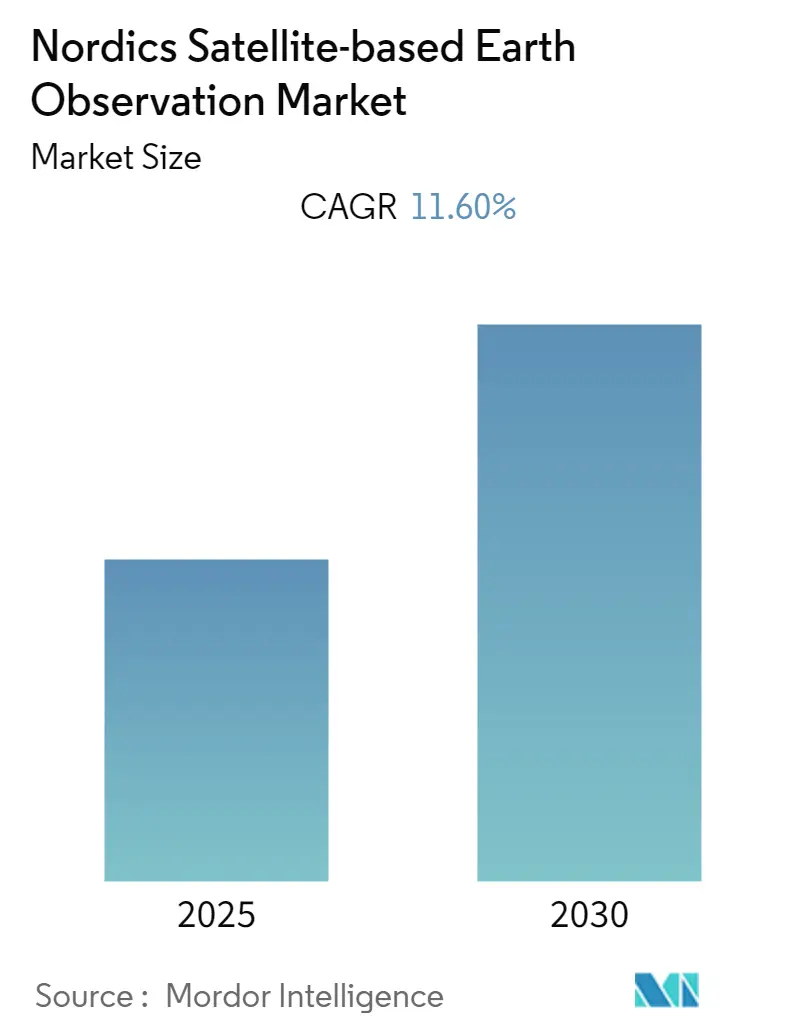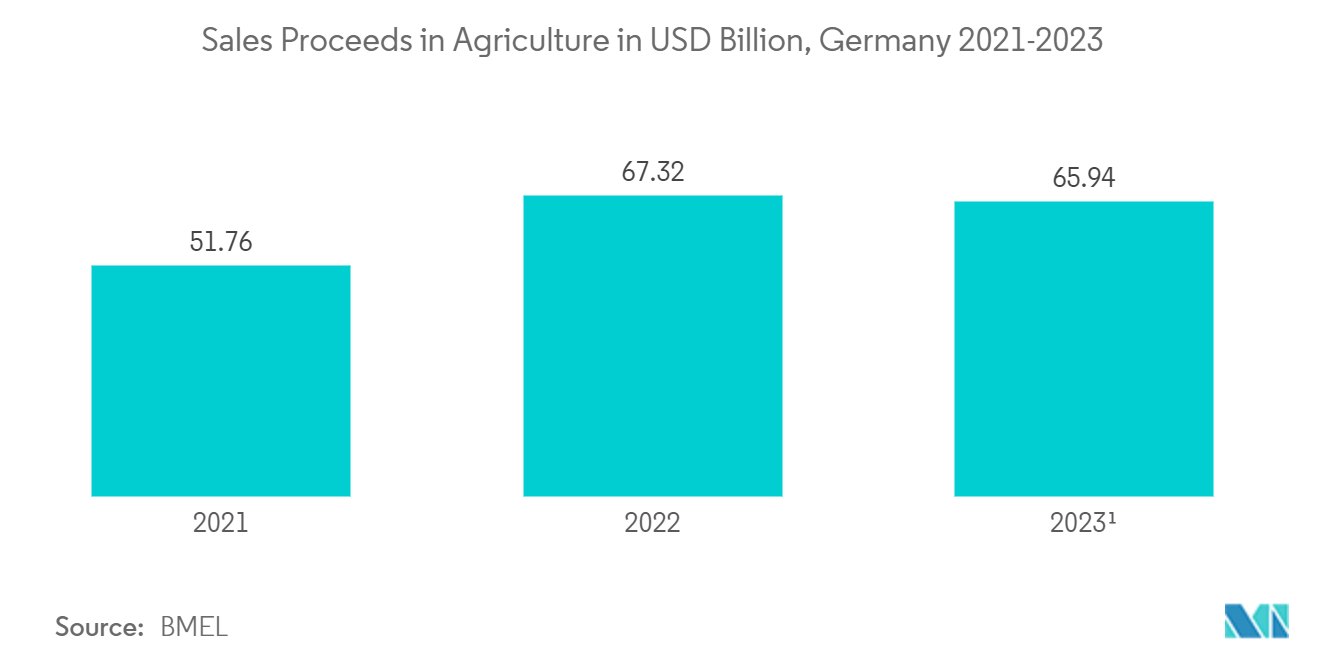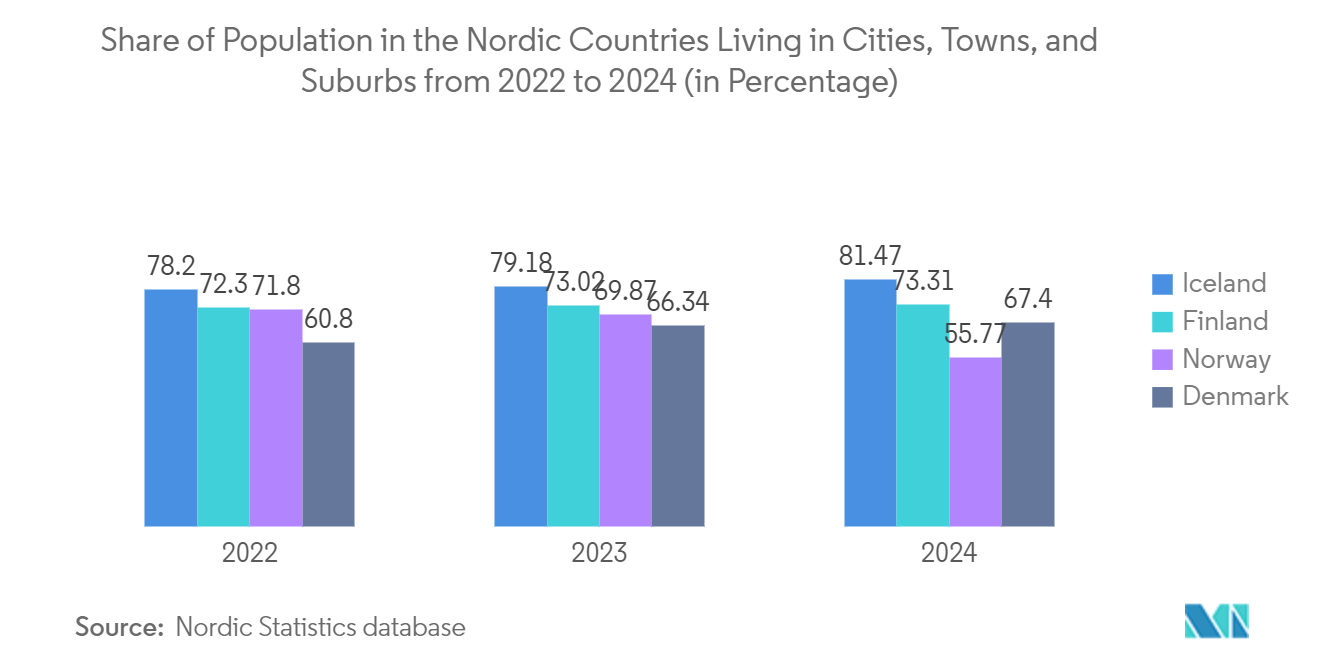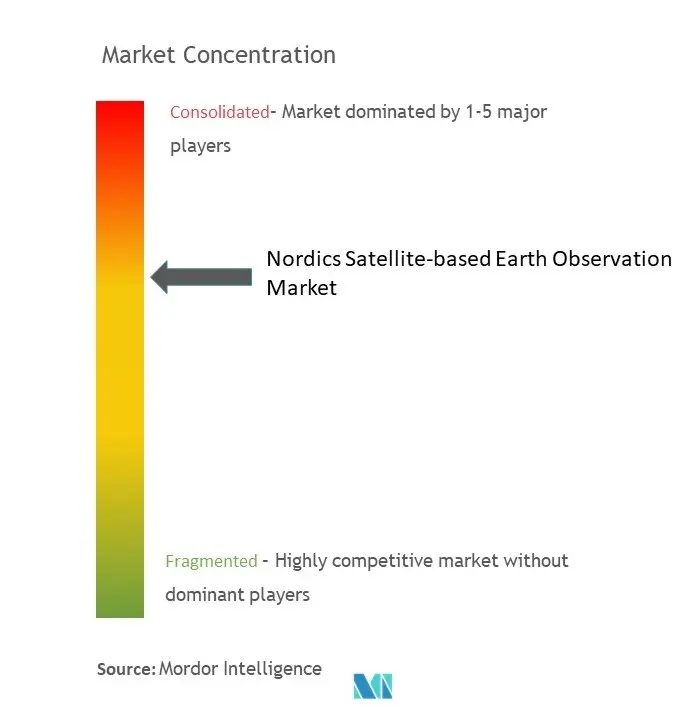
Nordics Satellite-based Earth Observation Market Analysis
The Nordics Satellite-based Earth Observation Market is expected to register a CAGR of 11.6% during the forecast period.
The Nordic region, consisting of countries such as Norway, Sweden, Finland, Denmark, and Iceland, has seen a growing demand for satellite-based Earth observation in recent years.
- The Nordic countries place a high value on environmental protection and sustainability. Satellite-based Earth observation offers vital data for monitoring and controlling environmental elements such as forest cover, ice caps, water resources, and air quality. These statistics aid in the understanding of climate change, the planning of conservation initiatives, and the formulation of sound policy decisions.
- Countries in the region have well-planned cities and a focus on sustainable urban development. Satellite imagery provides valuable insights for urban planning, infrastructure development, and land use management. It helps in monitoring urban expansion, analyzing transportation networks, identifying suitable locations for new infrastructure projects, and assessing the impact of urbanization on the environment.
- For instance, in 2022, the Danish Ministry of Interior and Housing announced the signing of a collaboration agreement with the City of Copenhagen to secure more affordable housing in the city. The agreement requires that future residential construction ensure that 40% of the housing supply is public.
Nordics Satellite-based Earth Observation Market Trends
Growing Requirement of Satellite Based Earth Observation in Agriculture
- The requirement for satellite-based Earth observation in agriculture is growing in the Nordic region. Satellite imagery and remote sensing technologies offer valuable insights for precision agriculture practices. Precision agricultural techniques are rapidly being used by farmers in the Nordic area to optimize crop yield, minimize resource inputs, and reduce environmental effects. Satellite data aids in crop health monitoring by identifying regions of nutrient deficiency or water stress and allowing for targeted actions such as variable-rate fertilization and irrigation.
- Preliminary data suggests that sales revenue in German farming reached around 60.4 billion euros in 2023. The sales revenue in the agricultural sector in Germany is displayed on the timeline from 2000 to 2023.
- Drones and satellites have recently been used in Danish agricultural production. These technologies can be used to pinpoint specific areas of growth that require attention. It may also be used to optimize fertilizing or seed planting. Using satellite technology will optimize water consumption, optimize seed sowing, increase production, and produce higher-quality food.
- Moreover, satellite-based Earth observation provides continuous monitoring of agricultural lands, enabling farmers to assess crop growth, detect anomalies, and estimate yields. This information assists in timely decision-making, such as adjusting irrigation schedules, implementing pest management strategies, and planning harvest operations.
- To support the growing demand for satellite-based Earth observation in agriculture, there are initiatives in the Nordic region focused on promoting data accessibility, capacity building, and research collaborations. These efforts aim to empower farmers, agricultural consultants, and policymakers with the necessary tools and knowledge to harness the potential of satellite data for sustainable and efficient agriculture.

Sweden to Hold the Significant Market Share
- Sweden is anticipated to hold a significant market share during the forecast period due to the increasing number of research studies and investments in the satellite market, the presence of advanced infrastructure for aerospace research, and the quickest and highest adoption of commercial satellite imaging across various industries in Sweden.
- Satellites provide essential data for monitoring environmental parameters such as air quality, water quality, land cover, and vegetation health. This information enables policymakers and land managers to assess the impact of human activities on the environment and make informed decisions regarding land use planning and conservation efforts.
- Moreover, infrastructure planning and development Satellites provide valuable insights. They assist in identifying suitable locations for transportation networks, urban expansion, and renewable energy projects. Satellite data helps analyze terrain conditions, identify potential risks, and optimize infrastructure designs to minimize environmental impacts.
- The government of Sweden is continuously focusing on the development of the country's infrastructure. Hence, in June 2023, the Ministry of Rural Affairs and Infrastructure held a meeting in Malmo where participants from both the private and public sectors, professionals, and academics will come together to reinforce European bonds and networks and increase sustainable, beautiful, and inclusive urban areas that are making the transition to meet the EU's target of net-zero emissions of greenhouse gases by 2050.
- This initiative will leverage advanced remote sensing techniques, data analysis, and Geographic Information Systems (GIS) to integrate satellite data into their decision-making processes.

Nordics Satellite-based Earth Observation Industry Overview
The Nordics satellite-based earth observation market is moderately consolidated, with the presence of major players like Thales, Airbus, OHB Sweden, Satlentis, Ovzon AB, RUAG Space, Spacemetric, Spaceport Sweden, TerraNIS, Karten Space. Players in the market are adopting strategies such as partnerships, innovations, mergers, and acquisitions to enhance their product offerings and gain sustainable competitive advantage.'
In September 2022, Satlantis signed a contract with OHB Sweden. Through this agreement, Satlantis will provide the instrument, an optical and infrared sensor with an 80-centimeter-per-pixel resolution, for OHB's InnoSat platform.
Nordics Satellite-based Earth Observation Market Leaders
-
Thales
-
Airbus
-
OHB Sweden
-
Satlentis
-
Ovzon AB
- *Disclaimer: Major Players sorted in no particular order
Nordics Satellite-based Earth Observation Market News
- May 2023: The inaugural "Global Space Conference on Climate Change" (GLOC 2023) was held in Norway. OHB SE highlighted its contributions to the Copernicus missions Copernicus Anthropogenic Carbon Dioxide Monitoring (CO2M), Copernicus Hyperspectral Imaging Mission for the Environment (CHIME), and Copernicus Imaging Microwave Radiometer (CIMR), as well as the Meteosat Third Generation (MTG) weather satellites and the German environmental satellite EnMAP, during this conference.
- April 2023: AndoyaSpace, a Norwegian aerospace business, developed a modest satellite launch station in Andoya, Norway. Norway will become one of the few countries in the world to have its own spaceport.
Nordics Satellite-based Earth Observation Industry Segmentation
Nordics satellite-based earth observation is done with the help of satellites orbiting around the planet to view and identify environmental changes, map making, etc. The satellite-based earth observation technology captures and stores information from satellites relating to the physical, biological, and chemical compositions of the Earth for monitoring, surveillance, and decision-making in various verticals, such as defense and intelligence, infrastructure and engineering, natural resource management, energy and power, and disaster management.
The Nordics satellite-based earth observation market is segmented by type (earth observation data and value-added services), by satellite orbit (low earth orbit, medium earth orbit, and geostationary orbit), and by end-use (urban development and cultural heritage, agriculture, climate services, energy and raw materials, infrastructure, and other end-use).
The market sizes and forecasts are provided in terms of value (USD) for all the above segments.
| By Type | Earth Observation Data |
| Value Added Services | |
| By Satellite Orbit | Low Earth Orbit |
| Medium Earth Orbit | |
| Geostationary Orbit | |
| By End-Use | Urban Development and Cultural Heritage |
| Agriculture | |
| Climate Services | |
| Energy and Raw Materials | |
| Infrastructure | |
| Other End-Use |
Nordics Satellite-based Earth Observation Market Research Faqs
What is the current Nordics Satellite-based Earth Observation Market size?
The Nordics Satellite-based Earth Observation Market is projected to register a CAGR of 11.60% during the forecast period (2025-2030)
Who are the key players in Nordics Satellite-based Earth Observation Market?
Thales, Airbus, OHB Sweden, Satlentis and Ovzon AB are the major companies operating in the Nordics Satellite-based Earth Observation Market.
What years does this Nordics Satellite-based Earth Observation Market cover?
The report covers the Nordics Satellite-based Earth Observation Market historical market size for years: 2019, 2020, 2021, 2022, 2023 and 2024. The report also forecasts the Nordics Satellite-based Earth Observation Market size for years: 2025, 2026, 2027, 2028, 2029 and 2030.
Our Best Selling Reports
Nordics Satellite-based Earth Observation Industry Report
Statistics for the 2025 Nordics Satellite-based Earth Observation market share, size and revenue growth rate, created by Mordor Intelligence™ Industry Reports. Nordics Satellite-based Earth Observation analysis includes a market forecast outlook for 2025 to 2030 and historical overview. Get a sample of this industry analysis as a free report PDF download.




